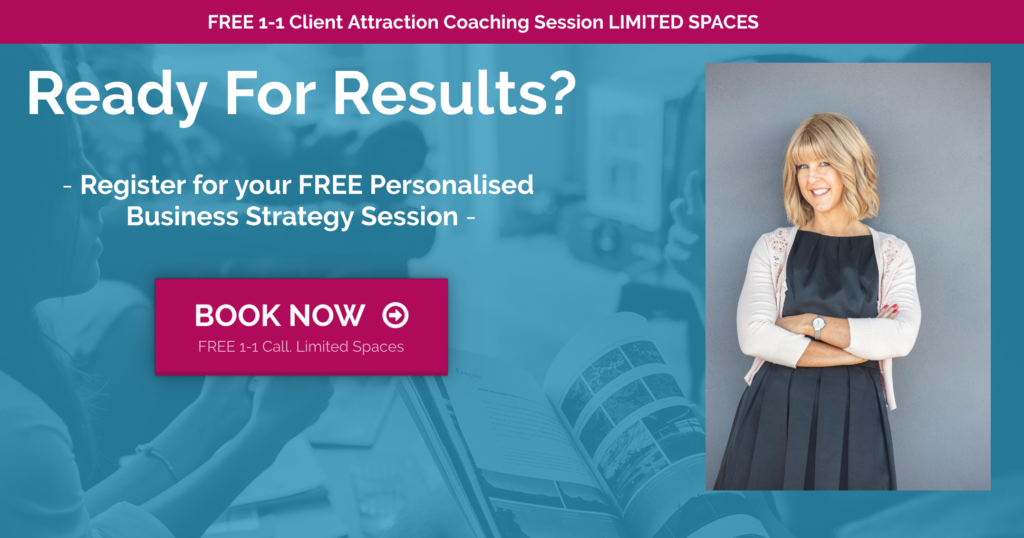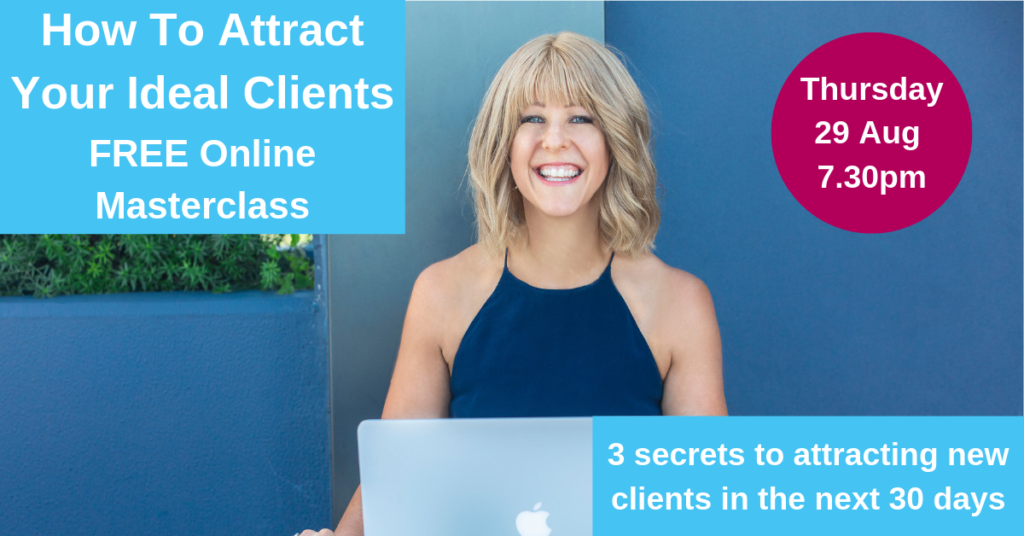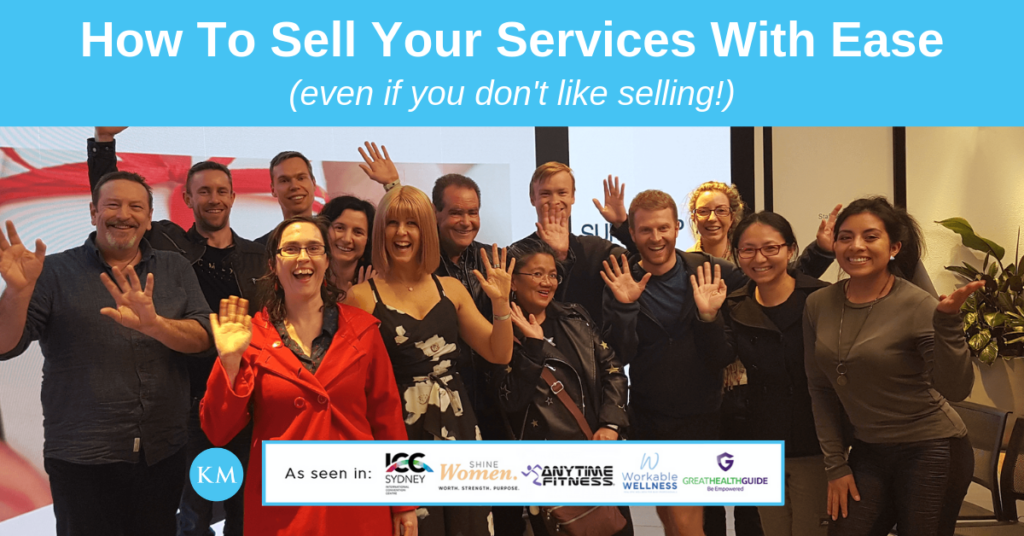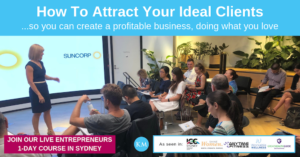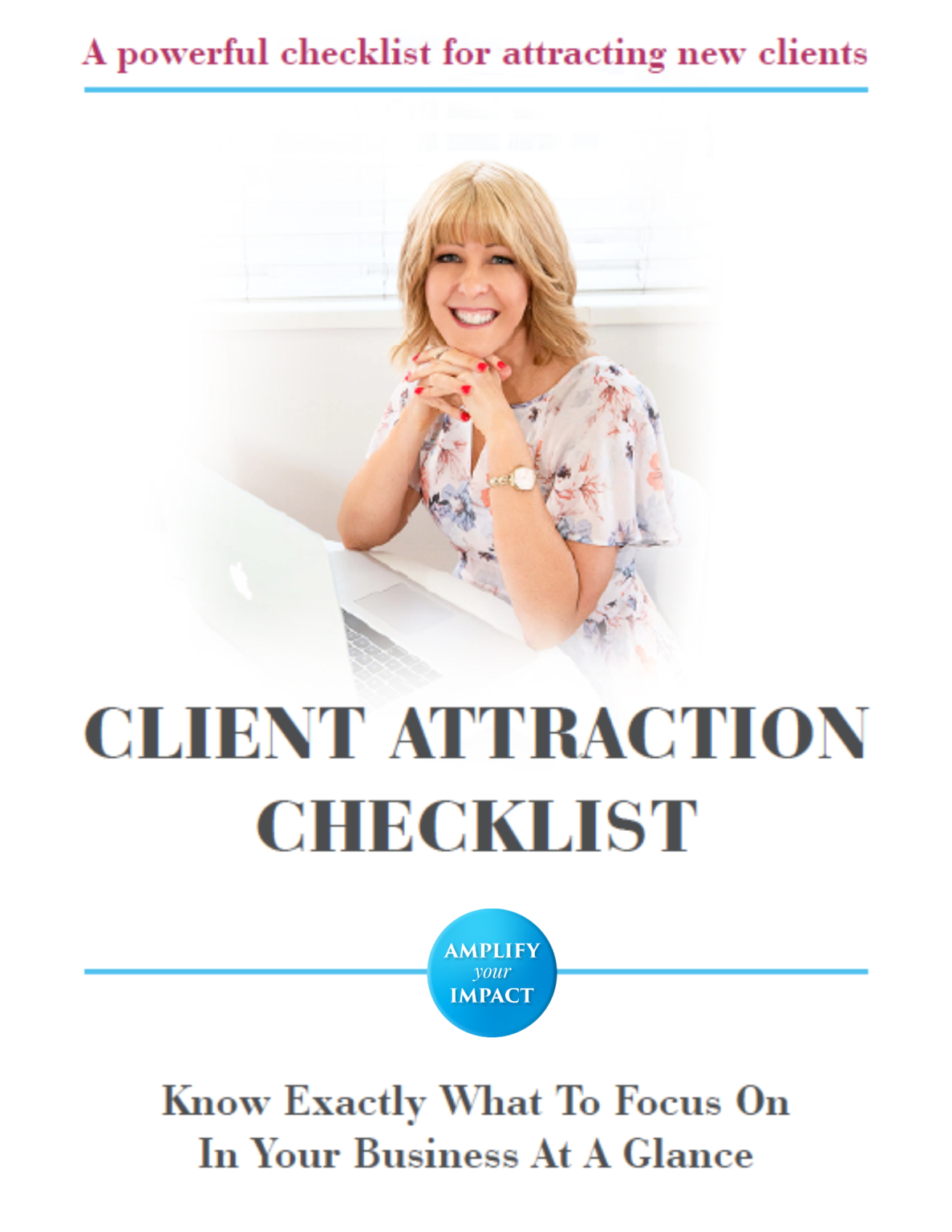Do you want to help people improve their quality of life, take more action and have a more amazing experience on this planet?
This requires the skill of influence, which is about getting under the surface to the deep layers to help people take action.
Why is influence so important? There are lots of areas in business where influence is key.
The four main areas I help people increase their influence in are sales, marketing, presenting and copywriting.
What is influence?
According to Oxford dictionary it is:
‘The capacity to have an effect on the character, development, or behaviour of someone or something’
Influence is not manipulating, it’s not convincing. It’s not trying to persuade or twist someone’s arm. It’s helping someone to get more of what they want.
Influence that is positive, ethical and authentic is helping someone improve their quality of life, helping them have a better experience in their day-to-day and helping them solve problems and get the solutions they want.
I love researching influence and practising my influencing skills so I can help more people.
Like all skills, they are learnable and improve the more you practice them. You can learn to turn up your influence like a volume switch – to amplify your ability to help people.
When you know how to influence people, you become free. You don’t ever have to rely on anyone ever again to make money, because when you understand the power of influence and apply it, you will always have plenty of money in your bank account.
When you’re effectively using the skill of influence, you will be impacting people’s lives, really making a difference and doing what you’re here on the planet to do.
You will be making a difference, contributing, serving, having the joy and fun and ultimately having a life of freedom and flexibility.
In this training, I share how to become more influential when creating your content.
Influential content includes webinars, live events like workshops, videos and marketing copy.
Sales includes one-to-one and one-to-many. It could be selling on a video, selling live or it could be a face-to-face sales conversation with someone.
Our ability to influence (or not influence) comes through in our language patterns, our tonality, the way we say things and our body language.
When you learn the art of true influence, your improved communication skills can result in more success in your sales, marketing, communication, and presenting.
So here are 3 powerful ways to make your content more influential…
1) Paint a Clear, Specific, Vivid Experience for Your Client

Number One is to paint – Paint a clear, specific, vivid experience of what the person (your client or future client) is currently going through and what they are experiencing.
For example, you might start talking about what they’re currently seeing in their life as a result of this problem, that you can help them solve.
You need to be descriptive. What are they seeing? What are they hearing? What are they hearing their partner saying? What are they telling themselves internally?
Now describe what they are feeling. Are they feeling fear? Is their heart racing? Do they have a knot in the pit of their stomach? Do they feel they have the world on their shoulders?
When you paint a clear experience for your client, you are bringing their experience to life. You are painting them a visual picture through their senses. You are helping them hear, see, smell, taste and feel the experience you are describing.
Becoming descriptive in your content brings your content to life. Rather than saying, ‘Are you struggling with fear?’ or ‘Are you struggling with anxiety?’ You are painting a clear, sharp picture of how this feels.
You would say, ‘Do you find your heart starts racing and your palms start sweating when thinking about how you are going to pay your bills?’ You are describing their experience. You are putting your client inside that experience.
First of all, paint the experience of what they are currently going through. This is what is going to stop them from scrolling right past you. It’s going to engage them, attract them, get their attention and hook them in.
Remember to use your ultimate client’s language when describing their pain-point.
Next, start painting a word picture of where they want to be. Start painting a word picture for your future client that describes the experience of what life would be like if they were where they wanted to be.
You don’t have to say, ‘Do you want to be slim?’ or ‘Do you want to be happy?’ Use nouns that bring your content to life.
Bring the future experience of your client’s breakthrough to life through your words. What will they see, hear, feel, when they have your specific solution? Describe visually, audibly and kinaesthetically what your client will feel when they implement your solution.
People learn and receive differently. Some people are visual, some are analytical, some are feelers.
We need to harness all of our senses and receptors if we want to create influential content. Describe your future client’s problem and then describe their solution by tapping into their sensed experience.
2) Pepper Your Content with Personal Stories
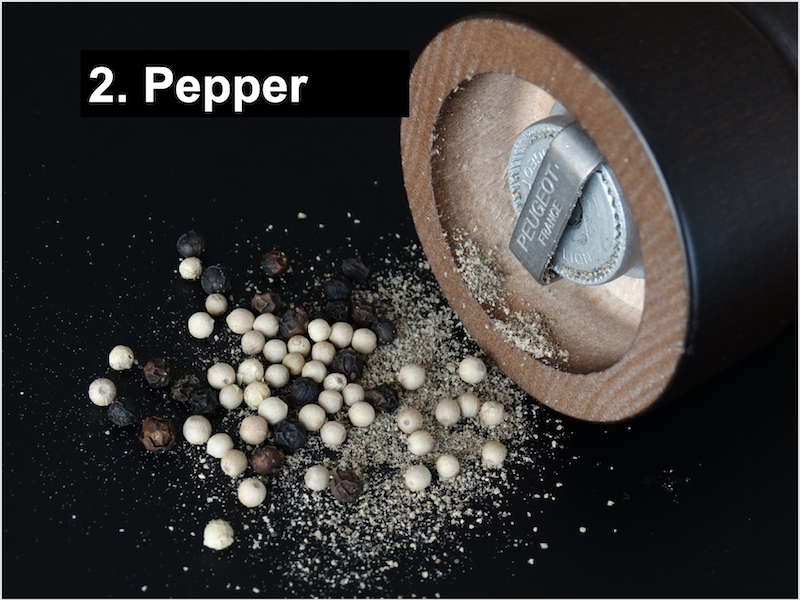
Number Two is pepper. If you go to a restaurant, you will find they have large pepper grinders. What is pepper used for? It’s used for seasoning food!
In a similar way, we need to add seasoning to our content also, to enhance our customer’s experience with our content.
To pepper your content, use relevant stories and examples from your own life. Currently, everyone is posting ‘How To’ content. I do this also. It’s because this appeals to our brain.
But people connect also through the power of personal story on a heart level. Connection on a heart level can supersede the brain connection. Peppering your content with personal stories brings your content to life. It actually helps activate the right side of the brain.
We have a left side of our brain that takes in logic and data, so it’s more analytical and methodical. Some people are more predominantly left-brained. The right side of our brain deals with intuition, perception, emotions and feelings. Right-sided brain dominant people are usually classified as creative.
Bring your content to life through stories and examples. Pepper your content with personal stories to back up your point and increase the heart connection with your clients.
I use a technique called window wiping. I create content that triggers the left side of the brain and then the right side, and back and forth.
3) Position Yourself as an Expert Authority
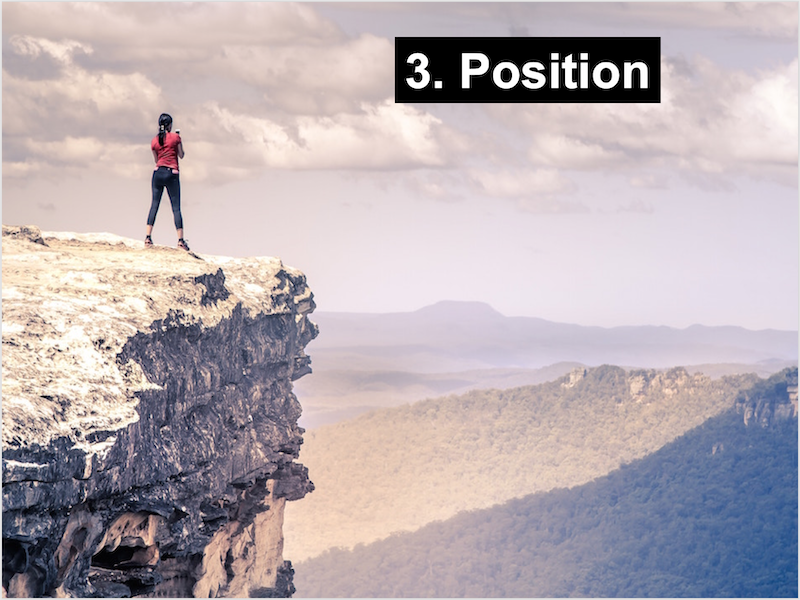 Number Three is positioning. Position yourself as an expert in your area and an authority to be taken seriously.
Number Three is positioning. Position yourself as an expert in your area and an authority to be taken seriously.
This makes entrepreneurs nervous. To position yourself as an authority puts a responsibility on your shoulders.
We suffer from tall poppy syndrome. We don’t want to big-note ourselves. So to place ourselves as an expert in an area is daunting.
Placing ourself an authority over a particular solution or niche is necessary, however! I train people to identify their niche and become an authority in that specific field.
You want to show people that you are credible in your area, so talk about your experience, your knowledge and your skills.
You can do this in a humble, grounded way that doesn’t come across as big-noting yourself. Present yourself as humble, genuine and authentic. And that’s when you will influence people and cause them to actually listen to you.
I talk openly about the experiences that I’ve had in business for the last 17 years. I’ve had various businesses and have had to attract my own clients.
I’ve had to really learn the art of influence. I’ve invested over $100,000 to develop my skills from some of the best teachers in the world. This is my lived experience.
My lived experience makes me an authority in the area of influence because I’ve made it my business to learn about influence. I’ve done this firstly for myself and now, I can impart my learnings to others.
I include what I’ve learned into my content, into my sales process, into my marketing and communications.
Ben Harvey is one of my favourite teachers in the world. He states that when you talk about yourself, go low with humble energy. Then raise your energy to say, ‘I’ve been so blessed to have done this and learned this…’ You start speaking louder with excitement when talking about what you’ve learned.
When you think about your next piece of content, consider how you can paint it with clear, specific, visual, kinaesthetic and auditory experiences.
Think about how you can pepper your content with relevant stories and examples that make your content more compelling and relatable. Then incorporate this with your learned authority as an expert in your niche and solution.
Ultimately, it’s going to help your future clients take the next step towards you. It might be something free, that will then lead the reader or listener further through your funnel towards being a paid client.
So, there are 3 powerful ways to make your content more influential.
How will you apply these to your next piece of content?
Do you need help creating more influential content to get more clients?
THIS weekend, the 14th and 15th of March, I’m running a two-day content creation workshop ‘How to Create Content that Connects’.

In this workshop, we create your content together, I provide you templates and formulas and you’ll walk away with a whole heap of content DONE!
There are only a few spaces left so get in fast!
To learn more about the ‘Create Content That Connects’ workshop this weekend, click here.
If you would like help being more influential in business, so you can attract more clients, I offer a free 30-minute strategy session, to help you gain clarity on how to grow your business.
You can book a 30-min clarity session with me here
(This is first-time sessions only and I don’t give you a sales pitch, only guidance and support).
Remember, the world is waiting for your brilliance!
Kat.
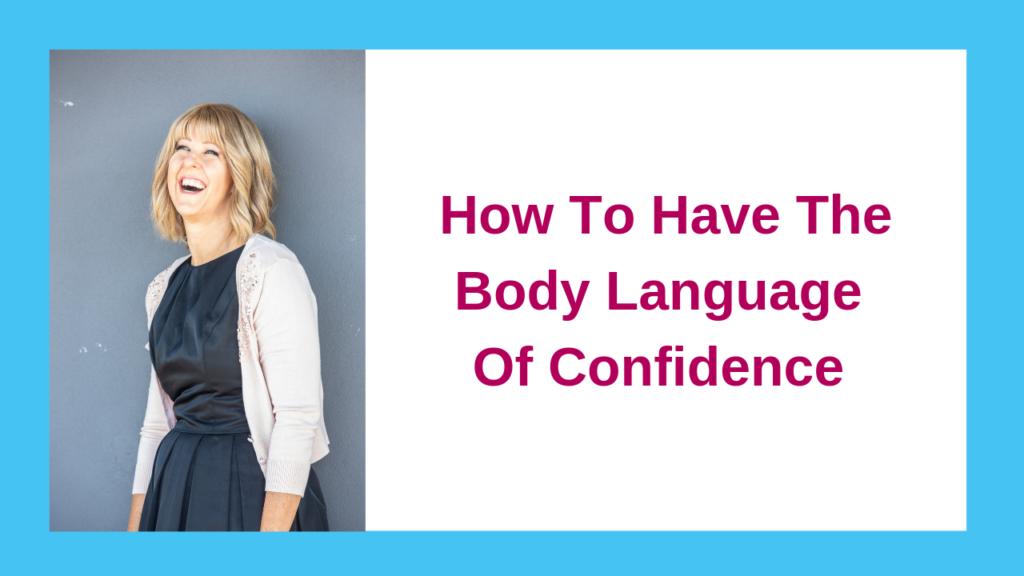
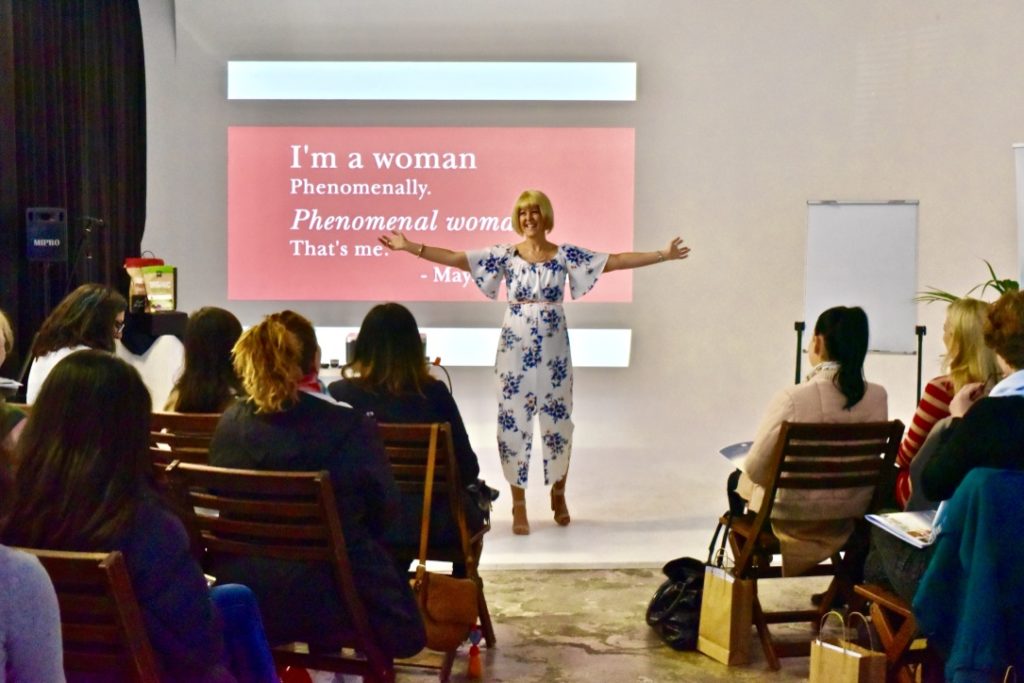 Part of our brain is scanning the body language to make sure that that person can be trusted. The more closed we are, the less confident we look.
Part of our brain is scanning the body language to make sure that that person can be trusted. The more closed we are, the less confident we look. People who are certain about what they’re saying use certain body language.
People who are certain about what they’re saying use certain body language. Another body language of confidence is symmetry.
Another body language of confidence is symmetry.